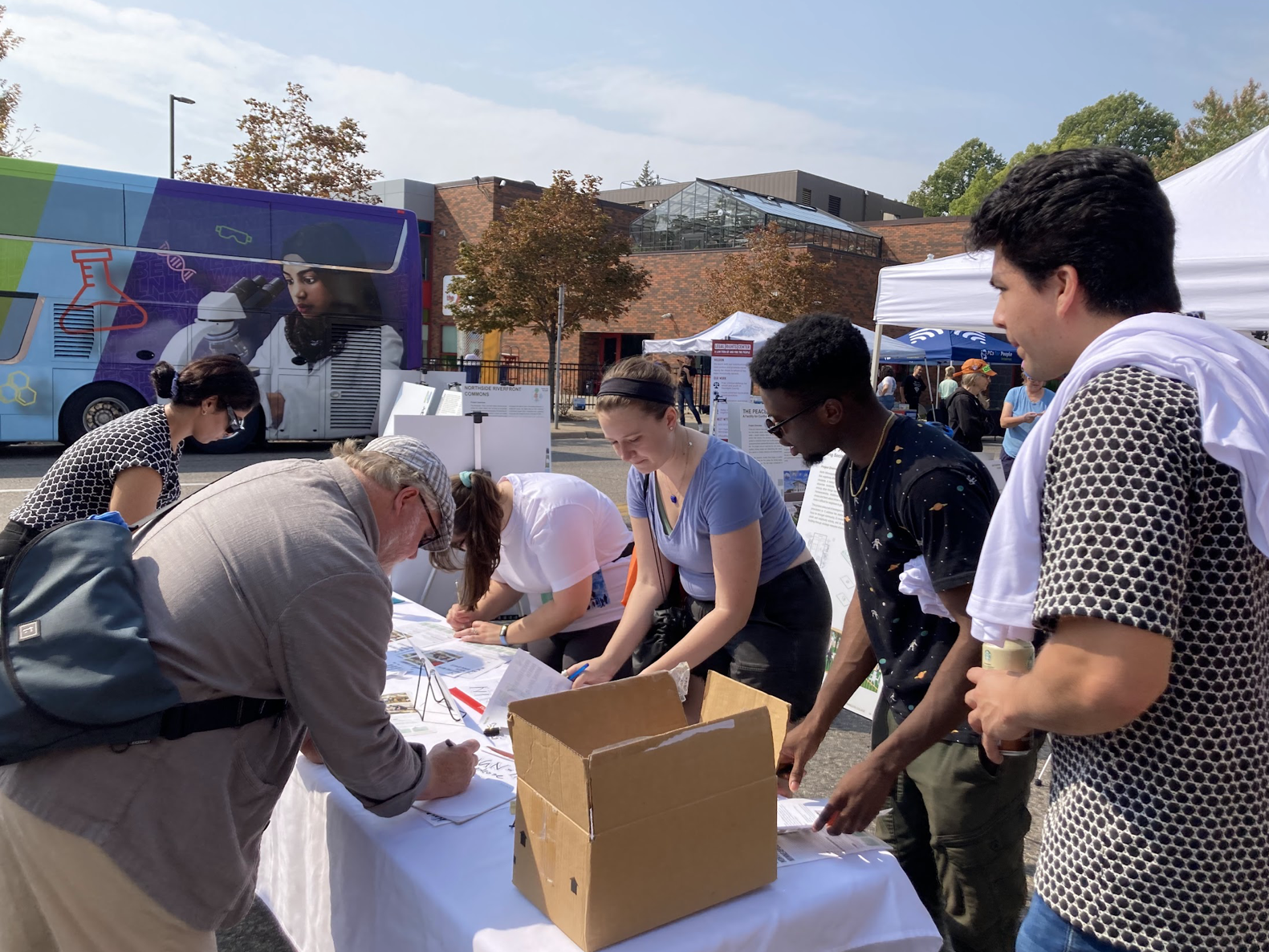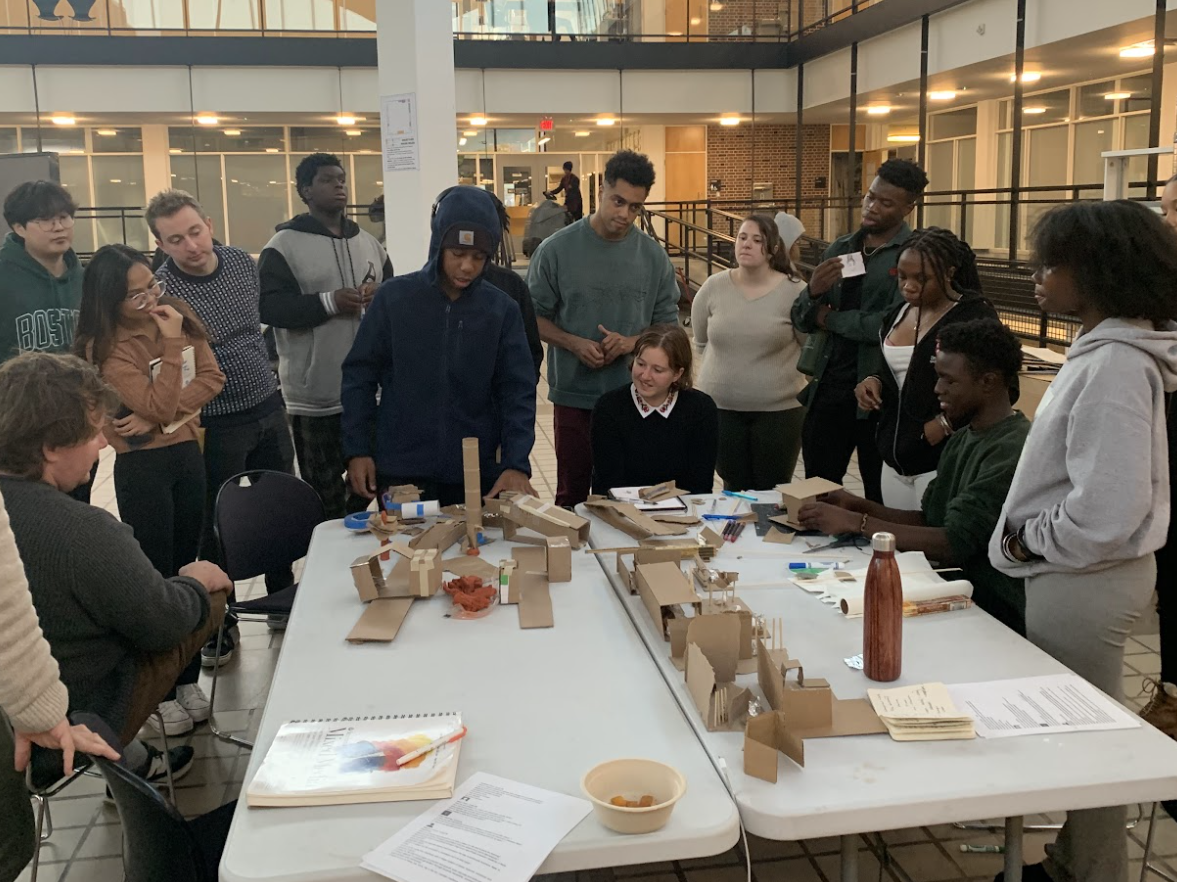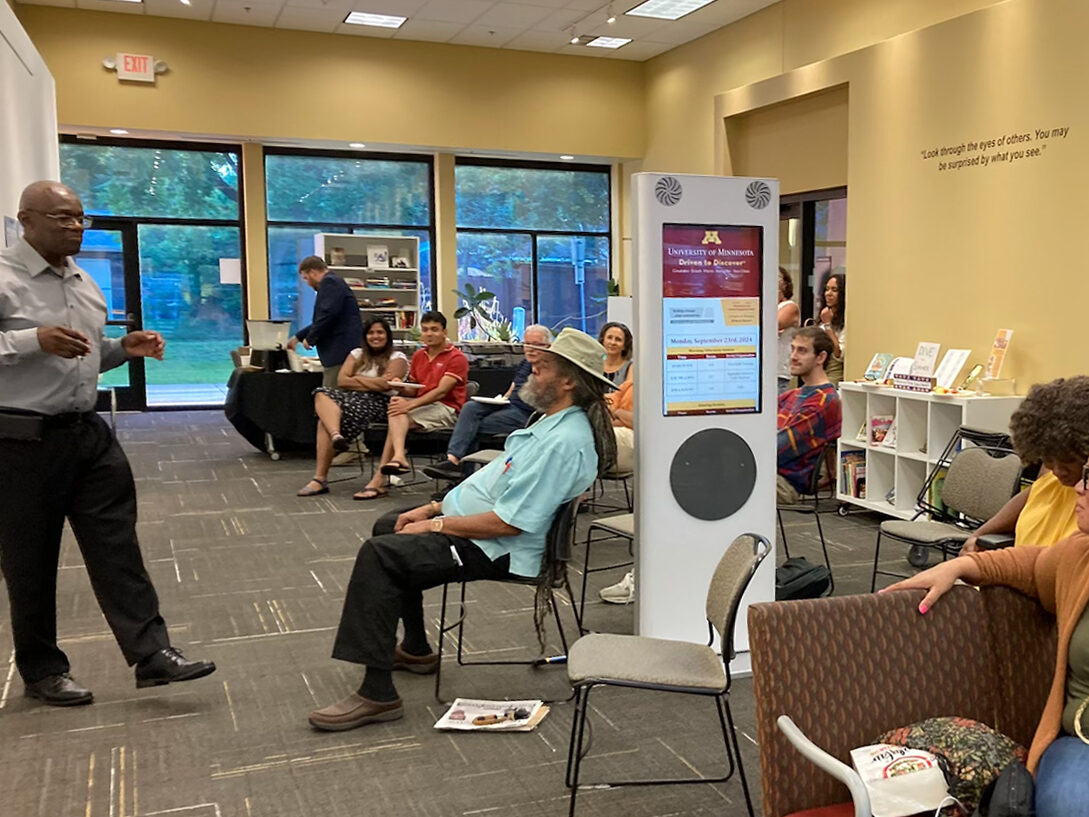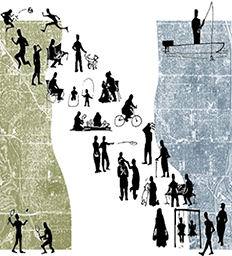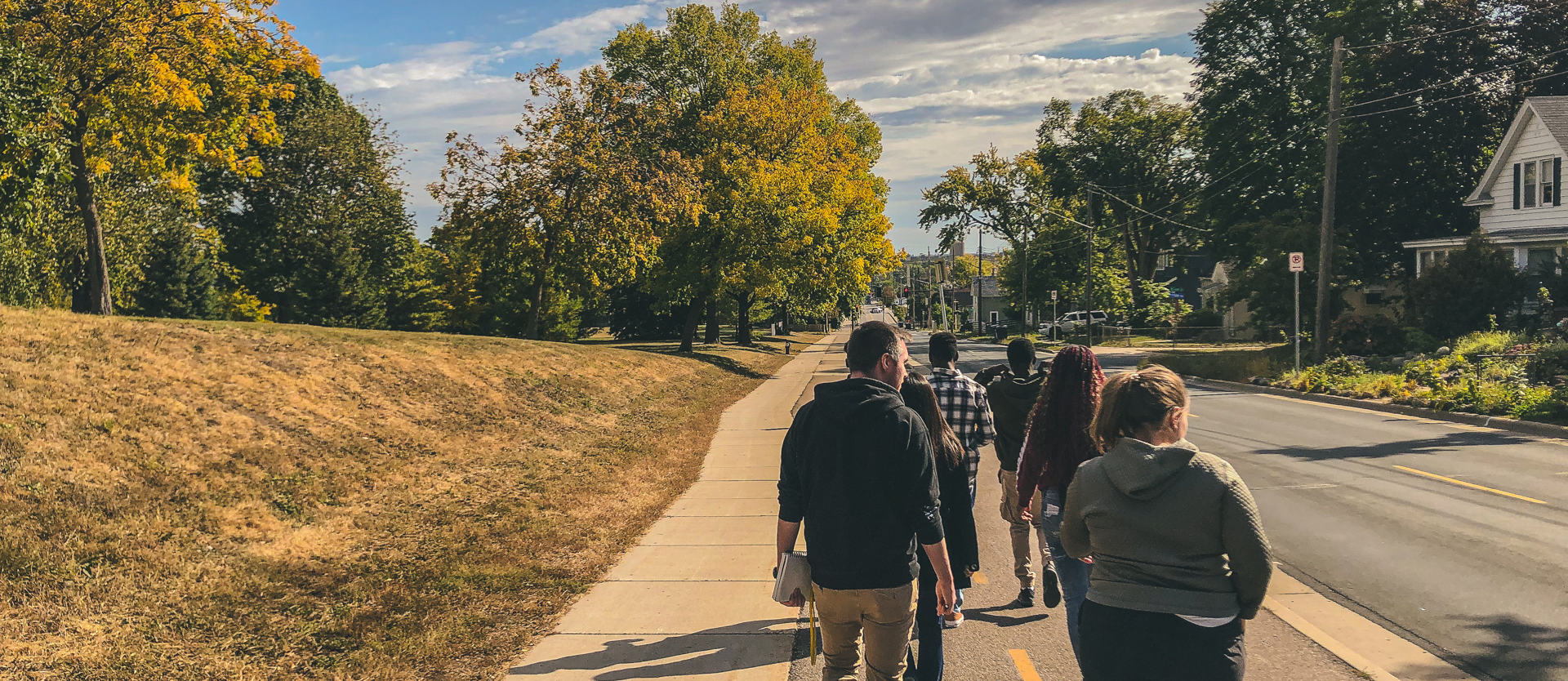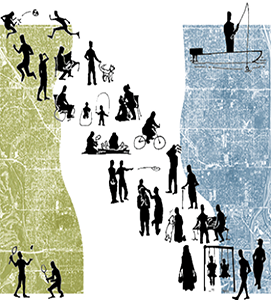
INVESTING WITH NORTH MINNEAPOLIS
Welcome to our site! Investing With North Minneapolis is a three-year research project highlighting community-informed student urban design projects supporting an equitable and green North Minneapolis. This website is the product of extensive collaboration between North Minneapolis community members, Northside Safety NET interns, and University of Minnesota architecture students. Scroll down to learn more about us!
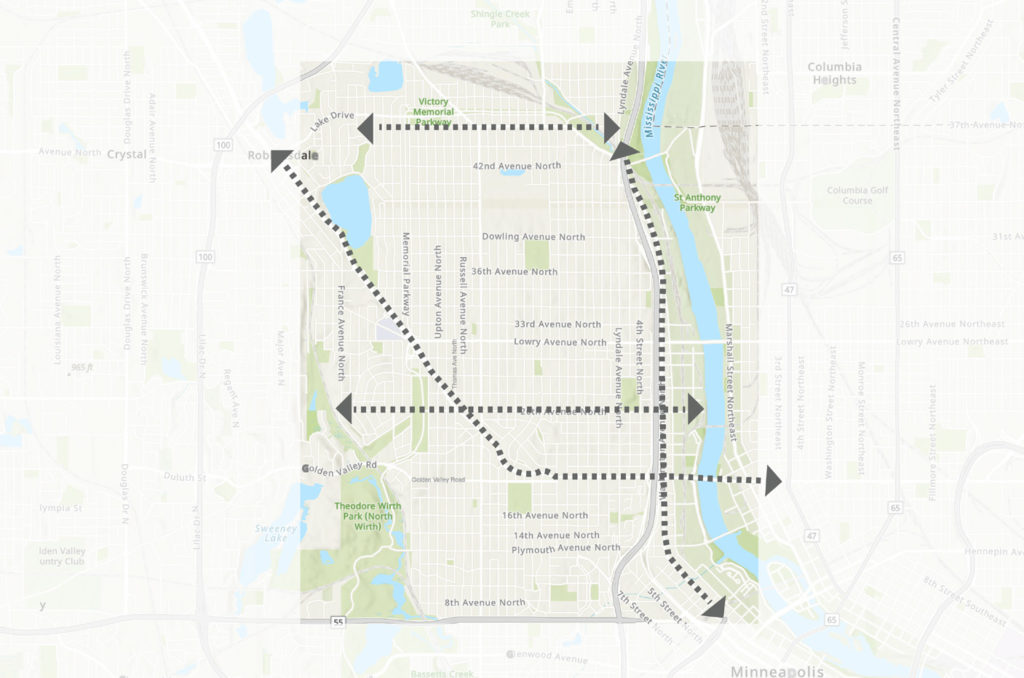
Map of North Minneapolis area
About Us
Select an arrow below to learn more about our project!
Mission
Learn about the purpose of the research
The Investing with North Minneapolis project worked with Northside community members to develop urban designs using grassroots strategies. Because these strategies originate from North Minneapolis community members’ values, the resulting designs have meaning for the people that live there. When design has value within a community, it builds wealth by nurturing the relationship between places and the people for which they are made. The project is collaborative, bringing together North Minneapolis organizations, individual community members, interns from Northside Safety NET Environmental Initiative (an environmental careers exploration program for Northside youth of color) and students and others from the University of Minnesota School of Architecture. Together, they developed and communicated a vision for the future of the North neighborhoods over three years (2021-2024). Designs were developed in class and community design meetings in a fall semester urban design class.
Project History
Learn about the origins of IWNM
Motivated to advance the future of North Minneapolis based on the ideas and goals of Northside inhabitants, in the Fall of 2021 the Northside Community Connection project was developed by research team members Julia Robinson (UMN School of Architecture), Jamil Ford (Mobilize Design), Cathy Spann (Jordan Area Community Council), Tim Griffin (UMN Minnesota Design Center), and Brandon Champeau (United Properties). The research-based University of Minnesota architectural design studio worked with community members from North Minneapolis and University experts to create equitable and regenerative urban designs that elevate the neighborhood, responding sensitively to its needs.
In 2022 the project continued, retitled Investing In North Minneapolis and supported by the University Research and Outreach-Engagement Center (UROC). Added to the research team was Savannah Steele (UMN School of Architecture), Michel Chaney and Catherine Fleming (Project Sweetie Pie), and Jaycie Thomsen (Northside Safety NET Environmental Initiative). Regular classroom meetings and Co-Design events at Farview Park allowed for collaboration between community experts, Environmental Initiative interns, University of Minnesota graduate students, and North community members. The collaboration-oriented conversations helped the group work toward the goal of creating urban designs based on the community’s insights and needs.
In 2023, renamed to its current Investing With North Minneapolis and funded by the Minneapolis Foundation, the project involved additional North Minneapolis organization representatives including Rochelle Washington and Patricia Bauknight (Webber Camden Neighborhood Association), Shawn Lewis (Minneapolis Parks Foundation), John Jamison (Northside Residents Redevelopment Council), and with support of Ar’Tesha Saballos, Clyde Quarles and Sebastian Wells. The project continued collaboratively with Northside Safety NET Envrionmental Initiative interns, who engaged with community Co-Design event participants.
Historical Context
Learn about the historical context of the project
The work represented in this exhibition takes place in and addresses the traditional, ancestral, and contemporary lands of the Dakota and Ojibwe people. We acknowledge the importance of advancing the rightful citizenship of the Dakota and Ojibwe, and are grateful for their stewardship. These lands continue to be the site of rich histories and struggles for these Indigenous Nations who were forcibly removed and relocated in the late 19th Century. More recent populations exist in the context of centuries of economic extraction from forced labor and enslaved Black people.
The Northside neighborhood is predominantly populated by Black Americans now and has been a sanctuary for minority groups such as Jewish refugees from World War II, Hmong refugees following the American War in Vietnam, and Native Americans. The culturally diverse and complex recent political history includes a combination of national crises, such as the 2008 recession and resulting foreclosures, the COVID-19 pandemic, and the tornado of 2011, all of which has taken a particularly hard toll on North Minneapolis. Additionally, the murder of George Floyd and other police killings have inflicted trauma upon the community. Although for several years since 2019 a number of shootings have taken place in Northside neighborhoods, recently peacemakers’ activity on the neighborhood streets has significantly reduced the problem.
Honoring the Dakota and Ojibwe legacy of land stewardship, this project aims to address the injustices of the past and to uplift the residents of the North Minneapolis neighborhood with beautiful, safe, sustainable, equitable and wealth-building designs.
Urban Context
Learn about connections & development
Construction of the I-94 freeway in the 1960s separated North Minneapolis from the Mississippi River. These neighborhoods remain isolated from the rest of the city by freeways and busy arterial roads, by inequitable public investment and inequitable wealth accumulation. Unlike other neighborhoods to the South that incorporate the Great River Road, parkland, pedestrians, and bicycles on the riverbank, the river area in this neighborhood is industrial with unpaved streets, few sidewalks, and disorganized parkland, pedestrian and bicycle paths. Access to the river remains blocked by the highway ravine, except for street access across West Broadway Avenue, 26th Street N, and Lowry Avenue.
Transforming North Minneapolis involves building on its assets in conjunction with the efforts of other organizations. In addition to reconnecting the neighborhood to the river, we seek further development of such vital resources as business on West Broadway and other streets, health clinics, community gardens, arts venues (eg.g. Juxtaposition Arts, Capri Theater, and music performance locations), local schools, churches, parks and housing.
2024 Exhibition
Click to see the boards presented at the Urban Research Outreach Center during September & October, 2024! Past exhibitions can be found under the Research Archive tab.
